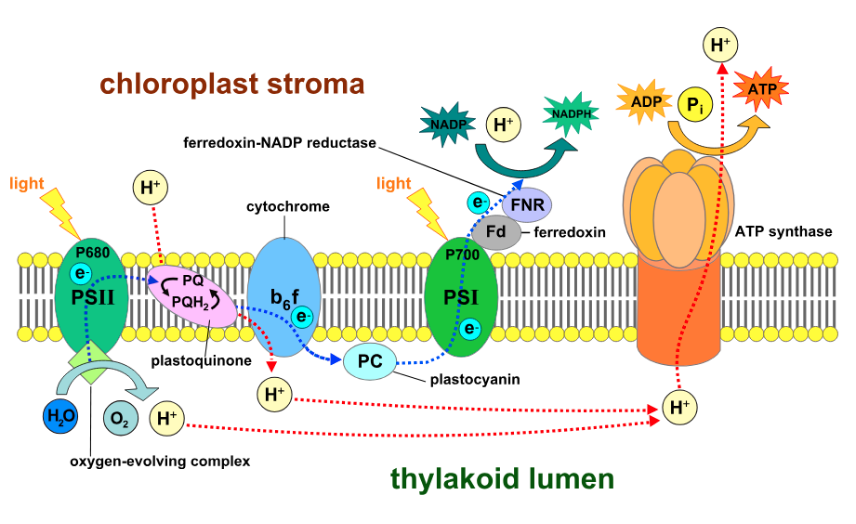Photosynthesis
- Jiwon You

- Mar 18, 2024
- 1 min read

What is Photosynthesis?
Simply, photosynthesis is the conversion of light energy to chemical energy. Photosynthesis first evolved in prokaryotic organisms such as Cyanobacteria, the early prokaryotes capable of photosynthesis.
Plants are photoautotrophs. One interesting fact is that autotrophs do photosynthesis whereas heterotrophs do not. This is because autotrophs have a special pigment called chlorophyll which allows them to capture sunlight's energy during photosynthesis. Photosynthesis could not take place without this pigment.

Leaves are where photosynthesis takes place in most plants. Stroma is aqueous internal fluid, thylakoid form stacks known as grana, and chlorophyll is a green pigment in the thylakoid membrane.

Photosynthesis splits H2O into H2 and O, and the electrons are transferred with H+ to CO2 reducing it to sugar.
*Reduction: gaining electrons
Two stages of photosynthesis: The Light-dependent reactions and The Calvin Cycle
The Light-dependent reactions take place in the thylakoid membrane. The conversion of solar energy to two forms of chemical energy (ATP and NADPH) occurs. Their waste product is oxygen.

The electron transport chain (ETC) is a series of proteins located in the inner mitochondrial membrane. The electrons pass through them. Photosystem l and Photosystem ll use their energy to pump electrons into the thylakoid lumen which leads to the creation of an electrochemical gradient. It makes that area very acidic.
The carbon fixation reactions, also called the Calvin cycle, produce sugars using ATP and NADPH made by the light-dependent reactions.
References
https://openstax.org/books/biology-ap-courses/pages/8-1-overview-of-photosynthesis#:~:text=Photosynthesis%20is%20essential%20to%20all,uses%20to%20power%20its%20metabolism. https://biologydictionary.net/ap-biology/3-5-photosynthesis/ https://education.nationalgeographic.org/resource/photosynthesis/




Comments